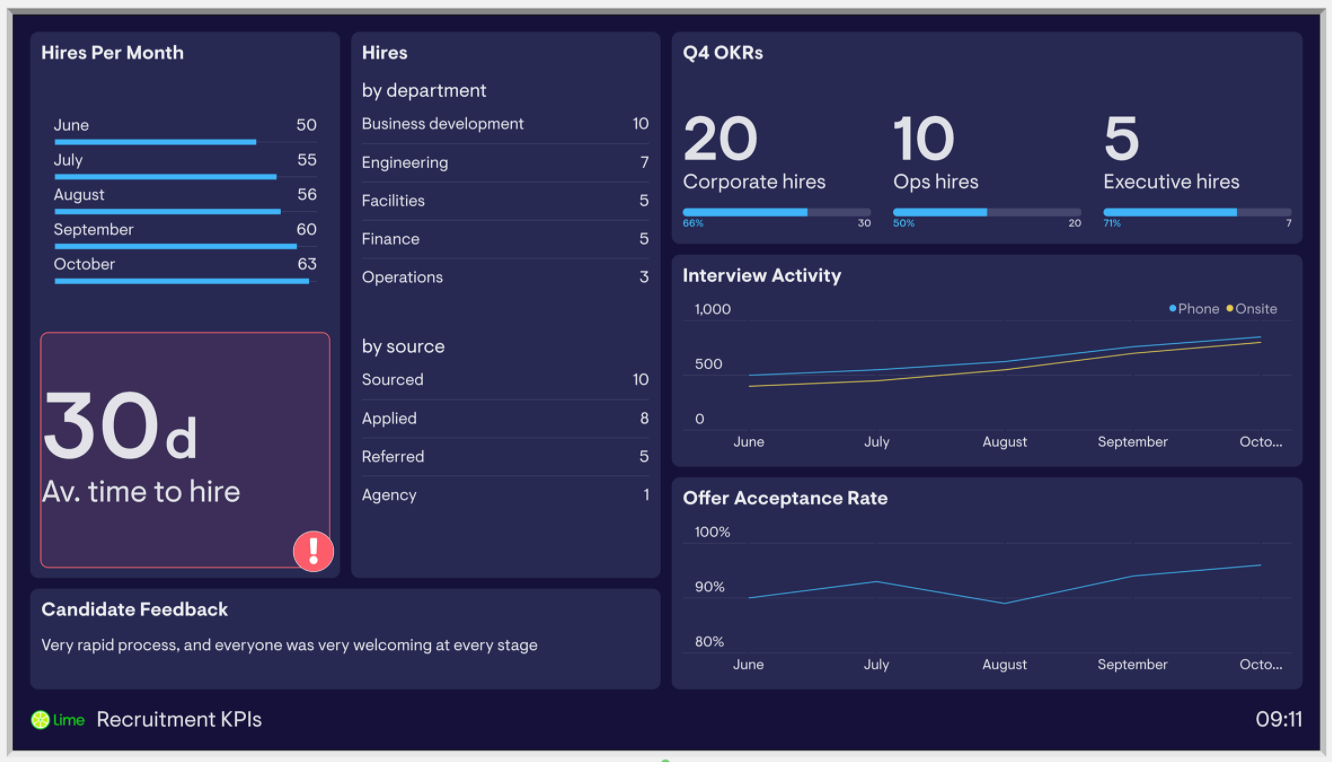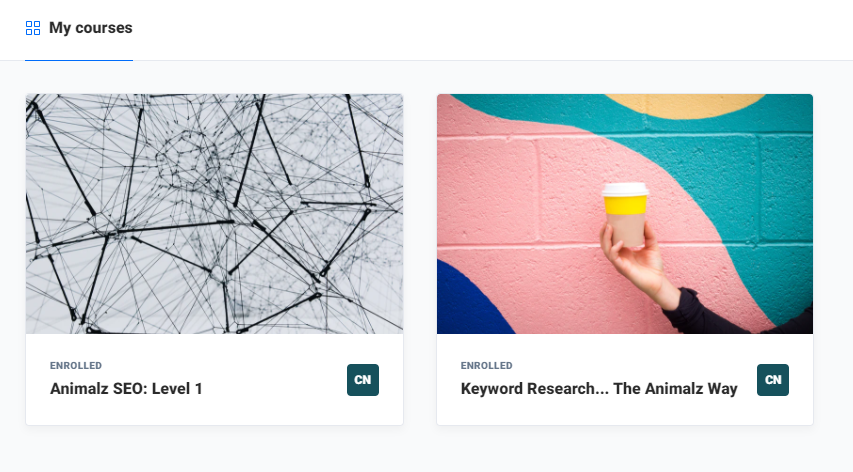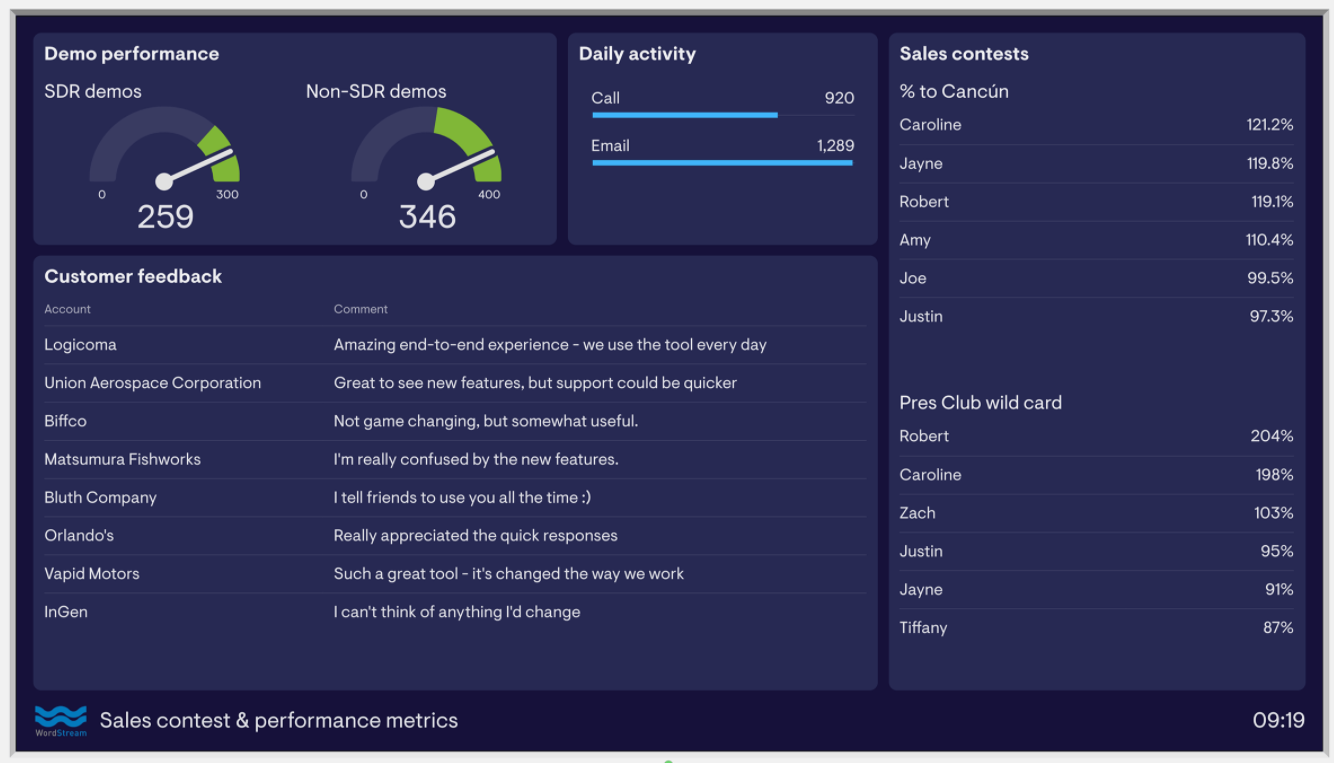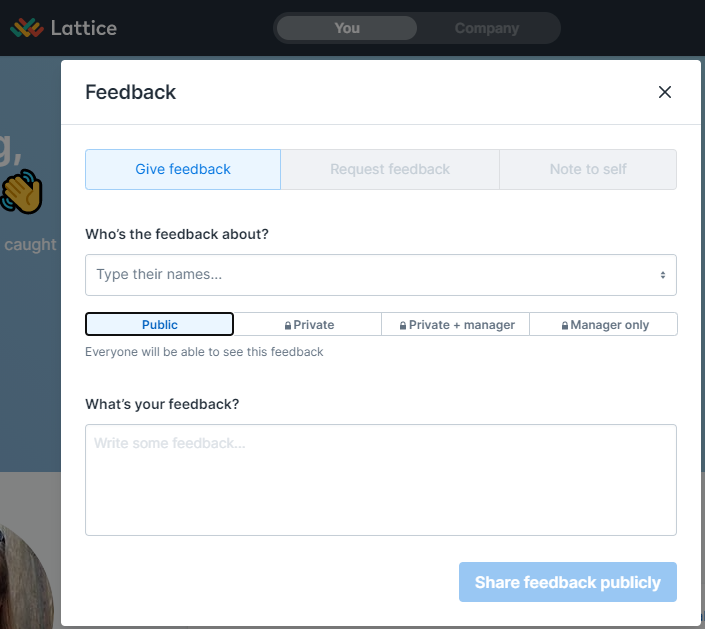There’s no doubt that your company benefits when employees are actively interested in their work. A recent Gallup survey revealed that highly engaged employees are more productive, have higher customer ratings, and are more likely to stay with the company.
The value of employee engagement may seem obvious to you as a manager. Even so, many organizations struggle to keep employees interested in their work. Worldwide, just 15% of employees are engaged.
If you want your team to be part of that 15%, it’s time to try different employee engagement strategies.
That’s why we put together a list of nine data-driven employee engagement strategies. Use these tactics with your team to boost productivity, reduce turnover, and improve employee satisfaction.
1. Connect individual tasks to company goals
Show your team members how their work contributes to the company as a whole. Share company wins, including how a team or team member’s work benefited the business. For example, if a support rep made a good impression on a customer, and that leads to a sales referral, let the employee know.
According to a Work Institute study, a key driver of employee engagement and motivation is being able to contribute to the company’s overall success. Showcasing wins helps individuals see their impact more clearly. It also highlights that the company as a whole is doing well, which helps with retention. A Payscale study showed that employees who believe the company is doing well are half as likely to leave as neutral employees.
Make the connection between individual tasks and company goals clear with a data dashboard.

Display current KPI results alongside overall goals, like the dashboard above does with its corporate, ops, and executive hires progress bars. Share both company-wide and team-specific metrics to help team members see how their progress benefits the business as a whole.
2. Schedule regular 1:1s with team members
A Gallup survey found employees who regularly communicate with managers are three times more likely to be engaged than people who only get feedback annually. Scheduled 1:1 meetings give both employees and managers a chance to talk about goals, progress, workload, expectations, and more.
These 1:1 meetings are an opportunity to show your team you care about them as people and that you want to help them succeed. If they’re struggling, find out why, and if you can help. For example, there might be a different aspect of the team project they’d rather be working on. See if they could help the current teammate assigned to that role.
Try to meet with team members weekly, if possible. Workhuman Research Institute found that among highly engaged team members, 47% meet with their managers weekly, and 32% meet monthly.
Not sure what to ask in your 1:1? Check out this resource for types of questions you can try out.
3. Encourage employee feedback
According to Gallup, one of the top 12 indicators of employee engagement is when employees feel their opinions matter. Show team members the company values their ideas and opinions by asking for them directly.
Collect employee input on new product ideas and features. Communications security provider Gryphon Secure increased engagement by asking employees what new features to prioritize. They found asking for employee input also helped save on research and development (R&D) costs.
Employee feedback can also help you find out how to help your team become more engaged. Ask team members what would make the workspace better and more appealing to them. You might ask this question during your 1:1s or through an employee feedback survey. Use the information to tailor your employee engagement strategies to best suit your team members.
4. Keep teammates connected
Help your employees be more invested at work by fostering a sense of belonging. According to an ADP Research Institute study, when people feel like part of a team they are more than twice as likely to be engaged. This is especially true for cross-functional and dynamic teams, which have a higher percentage of engaged employees than other types of teams.
Develop a way for team members to work with each other and offer support, even across departments or when working remotely. One method is to support employee-hosted “lunch-and-learns.” During a lunch-and-learn, an employee presents on a work-related topic, such as productivity or customer communication. These offer a platform for team members to help one another by sharing their expertise on a topic.
You can also adopt digital collaboration tools to support remote engagement. Communication platforms like Slack keep teammates connected online on both professional and personal levels. This helps build a sense of camaraderie that keeps employees interested in their work.
5. Build trust through transparency
If you want to boost engagement, you first have to build confidence. Employees are 12 times more likely to be engaged if they trust their manager or team lead. Foster an atmosphere of trust by promoting transparency and encouraging employees to voice their ideas and opinions.
Promote open internal communication so employees feel comfortable voicing their ideas. For remote teams, encourage the use of team-public Slack channels instead of direct messaging. This contributes to a culture of transparency. It also allows other team members to weigh in if they can help solve a problem.
Managers should strive to be transparent, as well. Institute an open-door policy so employees know they can stop by and share grievances or concerns. Adopt a salary transparency approach and encourage team members to come to you with questions about promotions or raises.
Employee engagement strategies that foster trust help strengthen the team as a whole. When employees can trust their managers and teammates, they’re likely to be more comfortable and engage more fully with their work.
6. Offer professional development opportunities
The 2020 LinkedIn Learning report found that 94% of respondents would not leave a company if it invested in professional learning opportunities. Professional development outlets give employees something to work toward, so they’re less likely to be bored or feel stagnant in their job. These might include access to training courses, supplemental learning materials, or chances to attend conferences and seminars.
During your 1:1s, ask team members about what learning opportunities they’d like to see. Even this conversation can boost people’s interest in their work. Employees are 2.8 times more likely to be engaged if they’ve recently talked about goals and successes with their manager.
Create relevant courses for employees using a learning management system (LMS). Animalz, a content marketing agency, created e-learning courses to help team members further their professional development goals.

You could also offer a stipend for books, external courses, or other learning materials so team members can find what’s most relevant to them. These options work equally well for remote and in-office teams.
7. Encourage employee autonomy
To develop authentic engagement in your employees, it’s important that you don’t micromanage. Team members need to have the authority to make relevant decisions without having to pass every single one up the chain of command. Encourage your team to take ownership of their tasks, and avoid dictating the exact steps they need to take to meet their goals.
When team members have autonomy at work, it leads to higher job satisfaction and a lower likelihood of leaving the company. In fact, a sense of ownership is a key feature of high-performance teams.
Shoe company Zappos has a “Holacracy” system that gives employees full ownership and authority within their role. Team members make decisions jointly, without needing specific approval from an overseeing manager. As the company grew and added more teams, the new system enabled faster decision-making and improved productivity.
Encourage employees to be engaged by giving them full ownership over an aspect of a project. You might have each team member set their own KPIs. For example, the person in charge of social media marketing could choose the five social media metrics they think best illustrate campaign results. Employees could then report on their progress at team meetings so that the group as a whole stays up to date.
Try a Management by Objective (MBO) approach. Tell your team what you want them to achieve—give them an overall objective. But don’t assign narrow goals. Let them choose the best way to reach their objective, and have them set their own objective key results (OKRs) to track their progress.
8. Embrace gamification in the workplace
Gamification introduces points, levels, or other game-related elements to the workspace to create an atmosphere of friendly competition. It motivates team members to push themselves and hit new goals as they compete against themselves and one another. In a TalentLMS survey, almost 90% of respondents said gamification at work helped make them happier and more productive.
Introduce game-like elements into your team’s everyday work to create a fun, stimulating environment. A ‘“leaderboard” dashboard encourages friendly competition between team members. The dashboard below shows the ongoing results of two sales contests and ranks team members in order of how well they’re doing.

It also shows team members their individual progress toward a goal so they can compete with themselves.
Other gamification techniques include:
- Giving employees digital badges to reward them for completed tasks or training
- Awarding points for hitting goals or milestones
- Creating levels within roles or teams, so employees can “level up” when they hit certain milestones
Gamification adds an element of fun. The levels, points, or badges serve as tangible markers so employees can see when they’re making progress.
9. Create an employee recognition program
Employees have to see value in their work, but it’s just as vital that they feel you see their value. Surveys have found that 69% of surveyed employees believe they would work harder if their efforts were better appreciated. In other words, recognition leads to better engagement.
Employee recognition programs show team members that you see and appreciate their accomplishments. With recognition, they’re less likely to feel isolated or believe their work is pointless, both of which can lead to disengagement.
Build a structured way to recognize employees for their work and achievements. Recognition can be informal, like calling out individual wins in team meetings. It can also be more formal or incentive-based, such as holding a pizza party when the team hits certain milestones.
Give employees the ability to recognize teammates for good work. For example, people management platform Lattice has a “public feedback” option.

Employees can submit praise or thanks for one another’s help and achievements, and the feedback is shared in the team’s Slack channel.
Encourage creativity with employee engagement strategies
As your team becomes more engaged, branch out your strategies to help boost employees’ creativity. Invite people to be innovative in ways that go beyond their day-to-day work. For example, you might set aside time during the week for your team to stop working on their usual tasks and brainstorm how the company could improve its current practices. This kind of opportunity helps connect employees to the company as a whole, and it might offer new insight into how they can help your company grow.
Ultimately, the key to finding the right employee engagement strategies—and increasing your team’s creativity—is trial and error. Try a few options, and see what resonates with your team.

